Beginner vegetable gardeners have a lot to learn. It’s a steep learning curve for many new gardeners. That’s why we’ve created this big list of tips for vegetable gardening for beginners.
You’ll learn all those little things that come with experience. Things like keeping detailed records of your crops and labeling plants so you know who’s who when it comes to harvest time.
So go on, get diggin’ there is plenty here for you to learn. If you’re just starting a new patch then make sure you read our step-by-step garden planning guide here.
1. Test Your Soil
Easily the most underrated task that new gardeners forget. Plants don’t just grow in any old soil but require a balanced mix of nutrients. The type of soil you have also determines which crops will thrive and which you’ll have to carefully look after (or not bother planting at all).
Beginner vegetable gardeners should test their soil throughout the growing season using a test kit. Testing your soil throughout the growing season with a test kit helps you make informed decisions about adjusting nutrients and pH levels to ensure your vegetables thrive and yield a bountiful harvest.
Sandy soils are great for root crops as they promote deep roots and are light enough that roots can easily penetrate the soil.
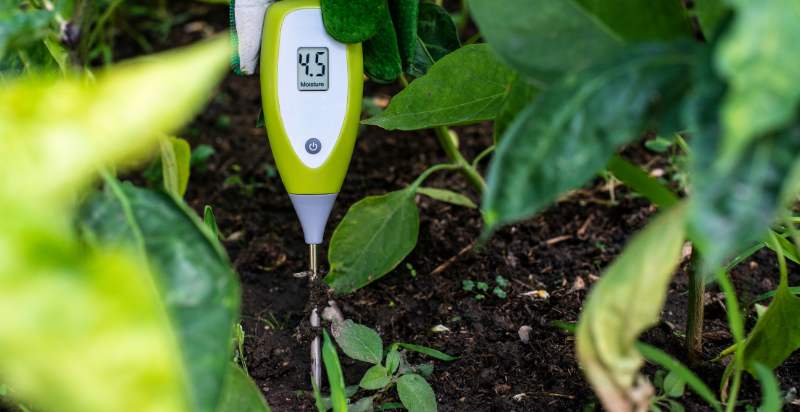
Clay soils are good for plants with shallow roots such as cabbage, broccoli and beetroots. The clay holds far too much water for warm-climate crops like tomatoes and other fruits. The heavy soil also makes it hard to dig up potatoes and carrots!
Loamy soils produce the best crops. They are rich in nutrients, and heavy feeders like tomatoes, salad greens, and fruiting plants thrive in their rich dirt.
2. Know When To Plant
Not every crop can be planted at the same time. Some crops thrive in the summer with hot temperatures and long days of bright sunshine. Whilst others shrivel and die in these conditions – they prefer cooler temperatures and shorter days. Check seed packets for the best planting times and use planting calendars to help you plan and plant your crops.
3. Water Your Crops In The Morning
Watering your plants at different times of the day can make a huge difference to how fast they grow. Overnight watering is largely wasted as plants are not actively growing through the night.
Aim to water your plants 2-3 hours after the sun has risen. This gives your plants time to wake up and the sun will have warmed your soil which will help protect your plants from the cold water.
Use a medium-fine spray nozzle when watering your plants so the water doesn’t compact the soil or damage young seedlings.
When it is cold it’s better to water your plants around midday when the soil is warmer. But you should avoid watering late in the afternoon or evening because it promotes mildew and other diseases.
4. Plant In Odd Numbers
If you want your new vegetable garden to look the best then try to always plant in odd numbers. Groups of 3, 5, 7 and 9 look nicer to the eye than even groupings of 2’s and 4’s.
High-quality hand trowels for beginner vegetable gardeners usually come with a handy measuring guide on the back of the blade to help you space out your crops. Planting in a triangular pattern will also make the best use of space and you’ll be able to grow more plants in a small area. Plant two plants in a row, then offset the third plant in a second row to make the triangle pattern.
For a list of super easy-to-grow vegetables then check out our 21 Best Container Gardening Plants.
5. Beginner Vegetable Gardeners Should Always Wear Gloves
No one likes callused hands or dirty fingernails. Specifically designed gardening gloves help protect your hands from prickles and hidden spiders or other insects on your crops.
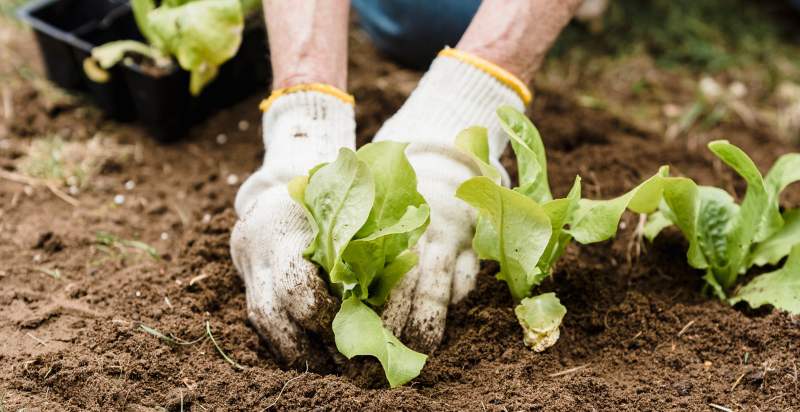
Before you put on your gloves, run a bar of soap under your nails. This will stop the dirt from collecting there so your hands will look and smell fresh after you’ve been digging.
6. Pull Weeds In Moist Soil
Weeding isn’t fun, but if you grow a vegetable garden you’ll be pulling weeds whether you like it or not. Make the task easier for yourself by pulling weeds in moist soil. When the soil is moist it’s looser and the plant’s roots are softer and more elastic.
Moist roots will stretch rather than break, so you’ll end up pulling out the whole weed – root and all. Instead of just pulling off the tops of your weeds like many beginner vegetable gardeners do!
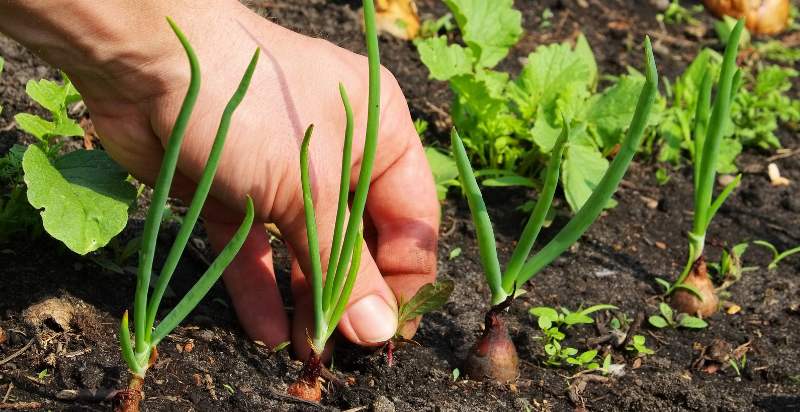
To make weeding even easier and faster, use a looped garden hoe to cut multiple weeds off at their root in one quick stroke of the blade. The roots will decompose in the soil and the tops of the weeds can be raked off or left to mulch.
7. Smother Persistent Weeds
Some weeds just don’t go away no matter how many times you pull them. Rather than pulling your own hair out in frustration, smother the weeds instead. Old newspapers covered with a layer of mulch are very effective.
Alternatively, you can cook the soil and weeds by covering it with black plastic for a few weeks over the summer. But beginner vegetable gardeners should be careful in doing this as it kills beneficial bacteria in the soil as well as the weeds.
8. Always Keep Records
There’s a lot of things going on in your vegetable garden. It’s easy to forget what beds you’ve already sown, or why you’ve planted something over there instead of here or what plant over there is.
Avoid double sowing beds or eating things that might make you sick by keeping accurate records on everything you do in your vegetable garden. A daily garden journal (great gift for beginner vegetable gardeners) helps you track what’s happening over time and you can use last year’s notes to prepare for this year’s crops.
9. Label Your Plants
Garden journals are great but they don’t always help you identify what plants are growing where. Plus you don’t want to have to run back inside to find out what variety of tomato this plant is, every time someone asks.
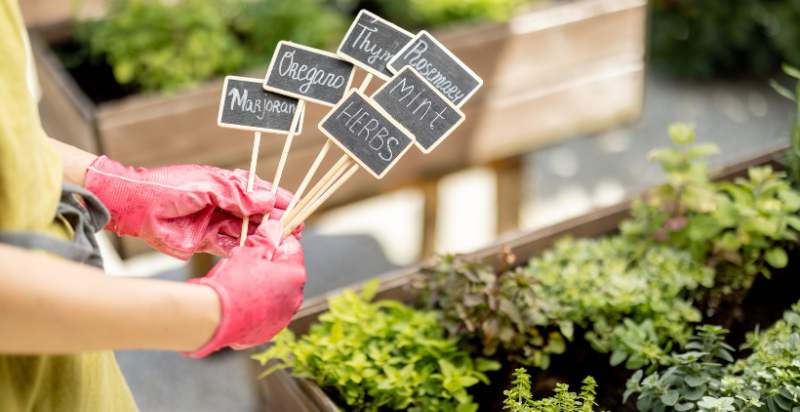
Plant labels are incredibly useful in the vegetable garden and they make everything look well-managed and ordered.
10. Feed Your Soil, Not Your Crops
Whenever you fertilize your garden, regardless of whether it’s chicken manure or slow-release pellets – you’re feeding the soil not your plants.
Feed your soil with rich organic matter and it'll reward you with healthy crops all seasonClick To TweetThat’s an important distinction to make, because all nutrients are made accessible by the bacteria and microbes living in your garden soil. Overuse of chemical fertilizers will kill the life in your soil and reduce the growth of your plants.
Feed the soil with rich organic matter which will provide a slow release of nutrients to the bacteria and microbes in your soil. A soil teaming with microbes grows a healthy garden with thriving crops.
Want to give your soil a boost of healthy microbes? Use homemade garden fertilizers to bring your garden back to life.
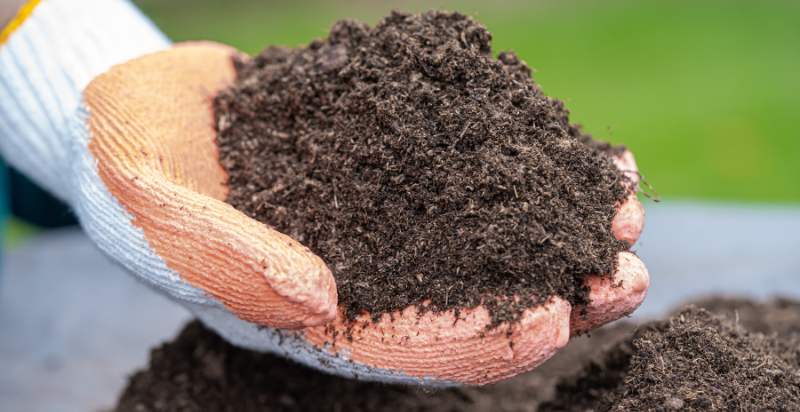
11. Keep Your Soil Covered
Leaving your soil exposed to the elements is a surefire way to reduce your harvests. Vegetable gardens with freshly tilled soil look nice, but will reduce your harvests if the soil is left exposed.
You can protect your soil from the elements by covering it with living plants, or organic matter. Cover any soil that’s between your crops with straw or lucerne mulch. The mulch will protect the soil and stop it from drying out. It’ll also break down slowly feeding your plants over time.
Don’t have a vegetable garden to cover in mulch yet? Read our essential guide to picking the best vegetable garden layout for your new garden.
12. Grow Up Not Out
Space is always a concern for beginner vegetable gardeners. Big veggie patches are hard to maintain and require a lot of time to care for. Instead, look for crops that you can grow up instead of out.
Having a smaller area of soil to tend to makes your life easier, and you’ll spend more time harvesting your crops and less time tending the soil.
Try a patio planting troughs which are perfect for beginner vegetable gardeners who have a small area to grow in.
13. Plant From Seeds
Store-bought seedlings may seem like a great option at first, but you’ll be better at growing your own from heirloom seeds. Growing your own seedlings is easy and you’ll be rewarded with more pest and disease-resilient crops.

Heirloom seeds produce better-tasting crops that grow faster and are harvested over a longer period of time too.
14. Water Your Vegetable Garden Regularly
There’s a lot of debate on how often you should water your crops. Some gardeners recommend infrequent watering to promote deep roots. But this advice is wrong – at least for single-season plants like most vegetables.
It takes a lot of energy and time to grow deep roots. That’s ok for long-term plants that will be in the same spot for years to come, but when it comes to vegetables we don’t want plants to spend all their time and energy producing roots – we want fruits, leaves, and harvests.
There are a few exceptions to the rule though. Some root crops such as carrots and daikon radishes produce the biggest roots with infrequent watering. But for 90% of vegetables frequent irrigation produces bigger and healthier crops.
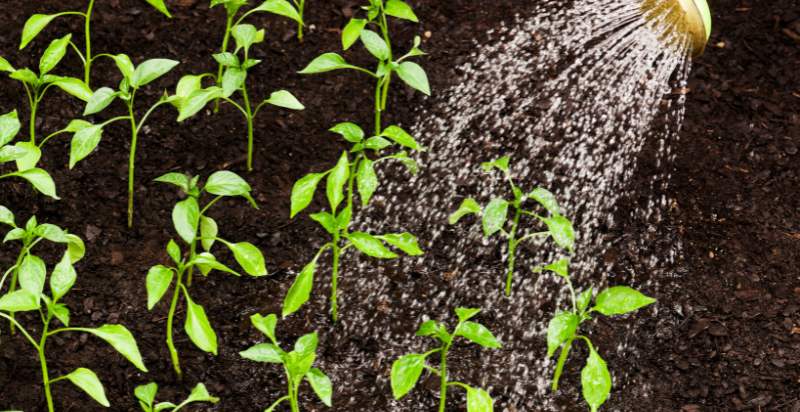
Hand watering is great for those extra-thirsty crops like lettuce and leafy greens. Make sure you use a medium-fine sprayer so you don’t damage young seedlings.
15. Use Drip Irrigation
Above-ground watering from sprinklers is very inefficient. But in a vegetable garden, it also spreads pests and diseases very quickly. Diseases such as mildew can spread across your entire garden in just one day with overhead watering.
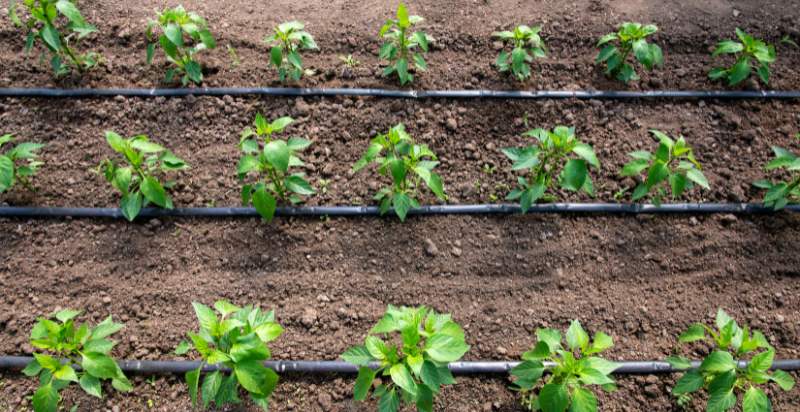
That’s why drip irrigation is the best way to grow crops for beginner vegetable gardeners. You’ll deliver water straight to the root zone instead of wasting it on foliage.
16. Don’t Over Fertilize
It’s tempting to just keep dumping fertilizer on your crops to try and get them to grow faster or think that it will produce more. But too much fertilizer can be a bad thing. Especially if you are using shop-bought fertilizers that are made from nutrient-based salts.
Apply too much chemical fertilizer and you’ll build up too much salts in your soil or nutrient imbalances that can kill your plants.

Little and often is the key to fertilizing your plants to make them grow. Read the instructions carefully on store-bought fertilizers before applying. Some have to be watered in, whilst others should be dug into the soil.
17. Make Your Own Pest And Disease Sprays
If you’re growing vegetables then it’s inevitable that your plants will be attacked at some point by pests or diseases. There are many commercial sprays available, but these can be expensive and are often made from toxic chemicals.
Instead of using poisonous chemicals (which kill soil life and slow down plant growth), you can make your own sprays using kitchen ingredients. These work just as well as the commercial sprays and cost 1/10th the price.
If you don’t have the time or would rather buy pesticide than make your own then try this organic home and garden insect spray. It’s made from natural ingredients and won’t harm you or your family.
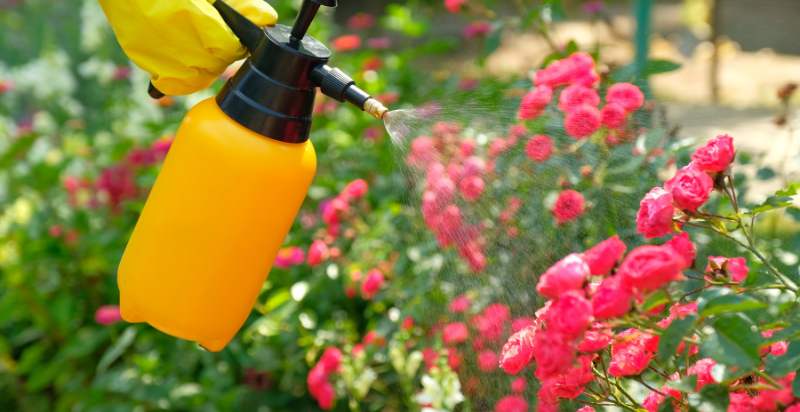
18. Space Your Plants Correctly
When you first fill a garden bed or row with seedlings it’s easy to overplant. At first, the garden will look very empty and it’ll feel like you haven’t really done anything. But stick to tried and tested planting guidelines.
Crops need room to grow. For instance, cauliflower plants often reach 2 feet in diameter when mature, even if the seedling only started out as small it quickly grows into something much bigger.
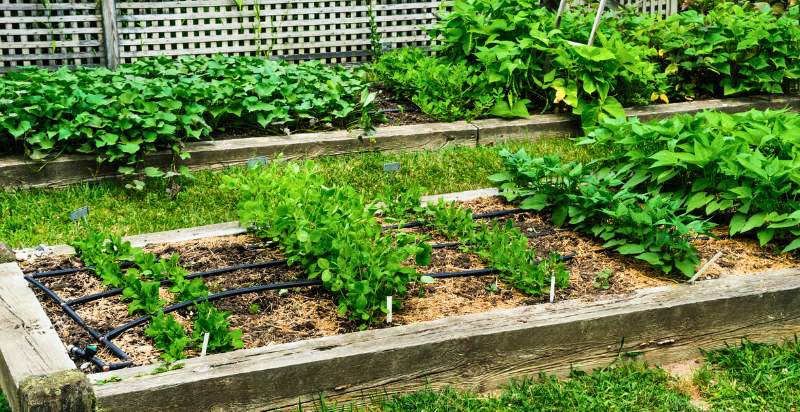
19. Always Start Small
Vegetable gardening for beginners should always start small. Your first patch should be no more than 4×4 feet. This is tiny but it’s to maintain and very productive. You can grow all your salad greens and herbs for a small family from this size garden.
Once you’ve master this little patch you’ll have a good grasp of what it will take to grow a bigger garden. You’ll also be more motivated to stick with it because you’ll be regularly harvesting from your first little patch whilst your bigger garden gets established.
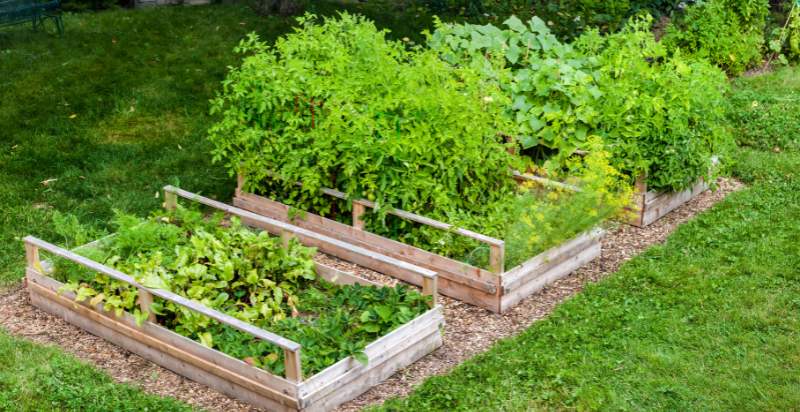
Raised garden beds are great for beginner vegetable gardeners as they make tending your crops easier and save you from back-breaking digging.
20. Plant Your Favorite Veggies
This happens all the time. We call it “seed catalog buyers syndrome” because it’s so easy for beginner vegetable gardeners to get caught up in the pretty pictures and enticing descriptions of crops you’ve never tasted. It’s good to try new things and expand your tastebuds, but if this is your first garden then stick to what you know and love.
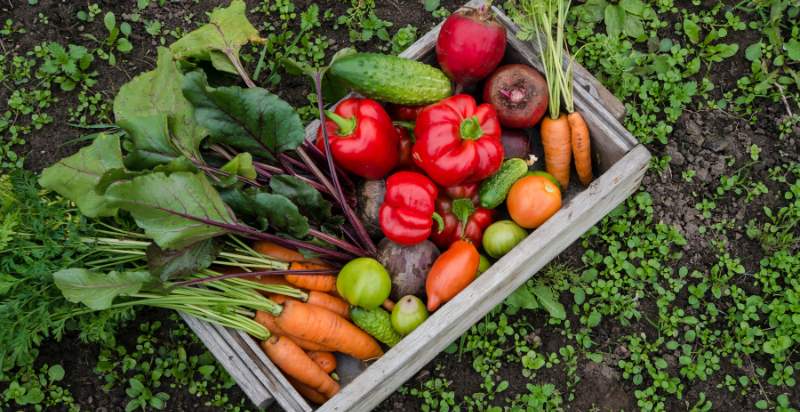
The easiest veggies for beginner gardeners are salad greens, herbs, potatoes, onions, tomatoes, peppers and beetroots. Whenever possible select heirloom garden seeds. They’ll be more resistant to pests and diseases and have the best-tasting crop varieties.
21. Plant Flowers And Herbs Too
Many vegetable garden beginners are so focused on growing food that they forget that gardens are also visual places. But that’s not the only reason to grow flowers in your vegetable garden.
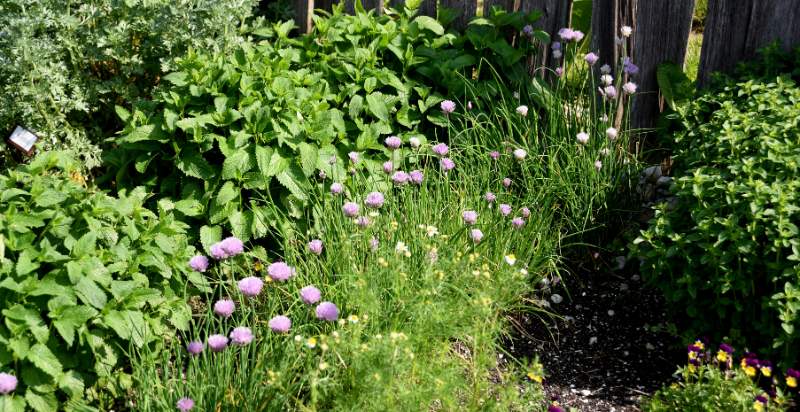
The bright colors and scents from flowers and herbs work very well to protect your plants from pests and diseases. By growing just a few brightly colored and scented plants you’ll greatly reduce how much time you’ll have to spend treating pests and diseases.
22. Use Wide Rows
Row gardens are very popular among market gardeners because they are easy to maintain and plan. But when it comes to vegetable gardening for beginners, you are much better off having wider rows and planting in blocks.
Wider rows grow more food per square foot and the less soil you have to tend to, the easier your job as a gardener becomes.
23. Rotate Your Crops
Growing the same plant in the same area year after year is a surefire way of diminishing harvests. Different plants require different nutrients, so by rotating your crops you’ll make the most of the nutrients in your soil.
Crops that get rotated also don’t have as many pests or diseases. Some plants such as beans and peas will add nitrogen to the soil for heavy feeders like salad greens and cabbages.
Whilst heavy feeding plants such as tomatoes and peppers help deplete the soil of nutrients which promotes bigger roots for vegetables like carrots and potatoes.
24. Choose Continuous Harvesters
Planting and harvesting your crops requires a lot of work. If this is your first garden look for plants that continuously crop over a long period of time. Crops such as beans, peas, tomatoes, peppers, cucumbers, and pumpkins.
By growing these plants beginner vegetable gardeners will spend more of time harvesting and less time planting and replanting beds.
25. Plant Successively
Probably the most common mistake of any beginner garden is that they plant the entire garden at the beginning of the season. This means that all the crops will reach their peak harvest at the same time.
ou’ll get a whole lot of produce all in the space of a few weeks, and then nothing else for the rest of the season. Instead, plant your crops successively. Plant ⅓ of a crop each month for 3 months. This will give you a steady supply over the whole season.
26. Avoid Compacting Your Soil
Don’t ever step on your garden beds! You want to make sure your growing soil is always light and fluffy, so your crops can grow roots easily. Keep your body weight and tools on access paths.
If you do compact a garden bed’s soil, then use a garden fork to aerate it again. This will add air back into the soil, but it will take time for the microbes to recreate the thousands of tiny air pockets that your plants need to thrive.
27. Don’t Till Your Soil
hen you first prepare your vegetable garden it is ok to till your soil. Beginner vegetable gardeners may even use a rotary tiller for this purpose. But after you’ve established your garden beds, you should avoid tilling the soil.
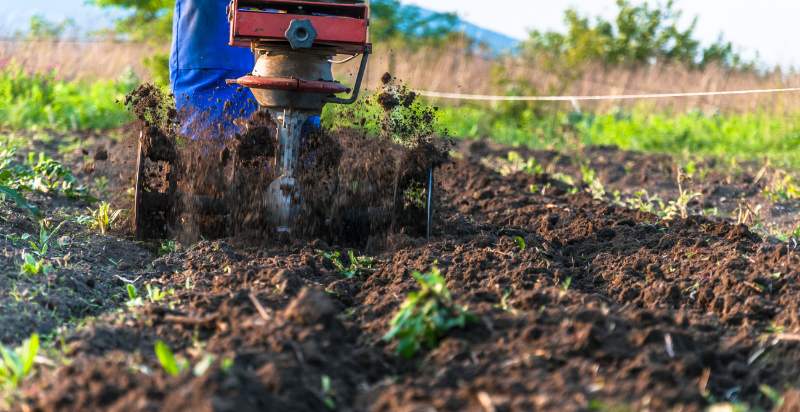
In a crop rotation plan, you’ll till the soil once every 4 years when you harvest your root vegetables and this is all the tilling your garden ever needs.
Tilling your soil dries it out and can even create hardpans (impenetrable layers of soil) which make it hard for your plants to thrive.
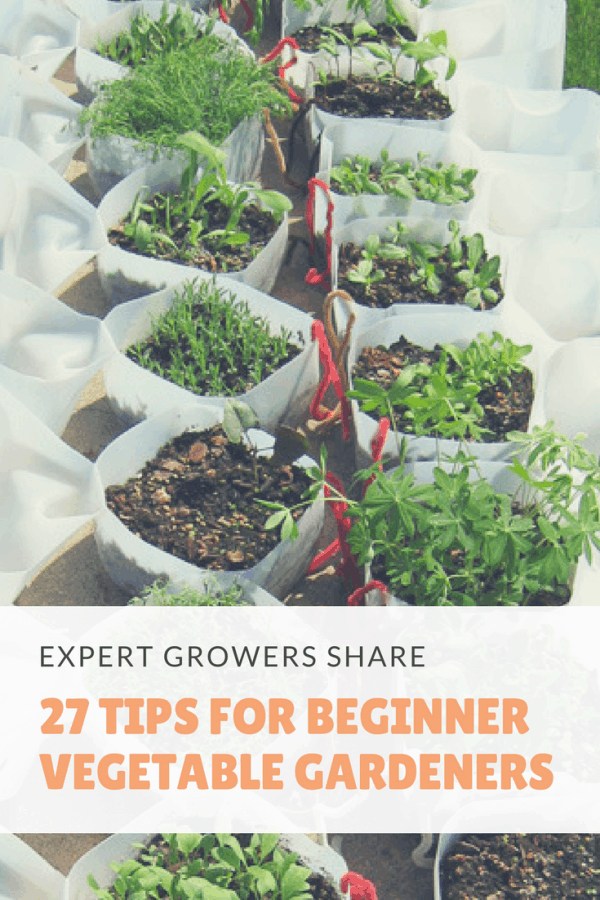
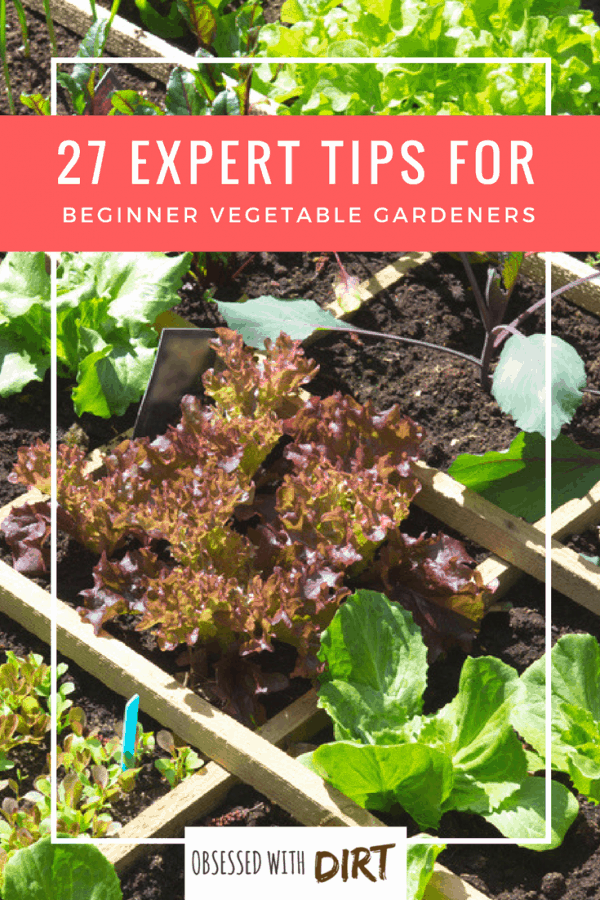
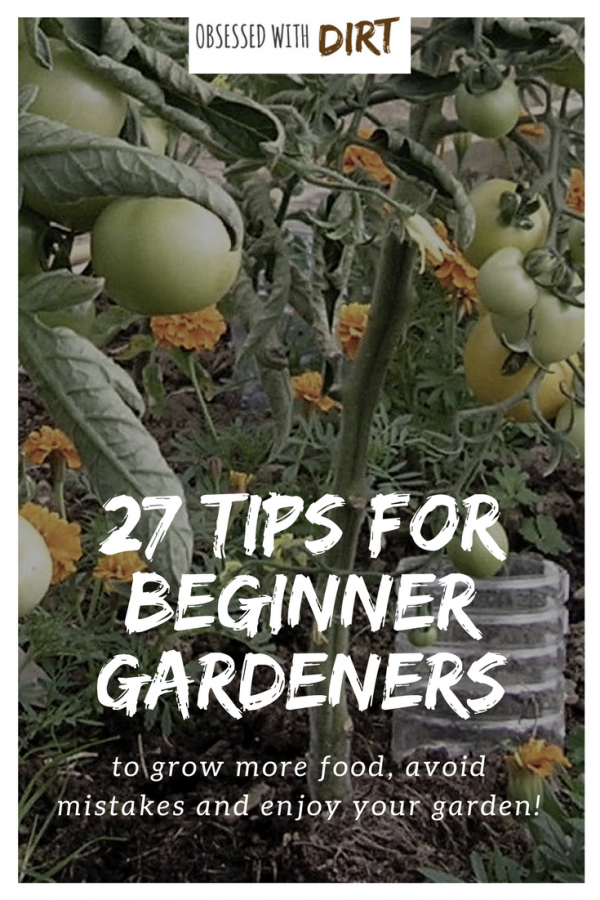
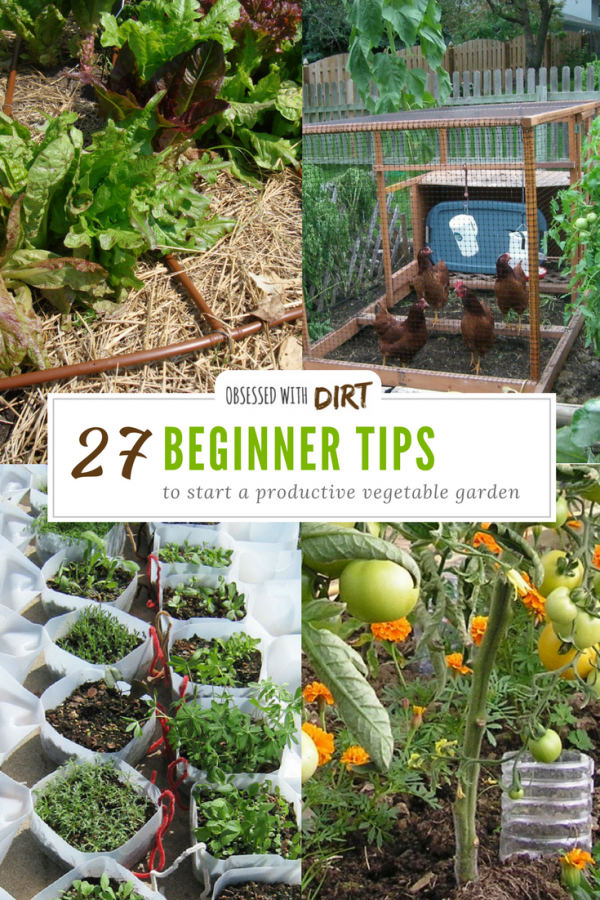
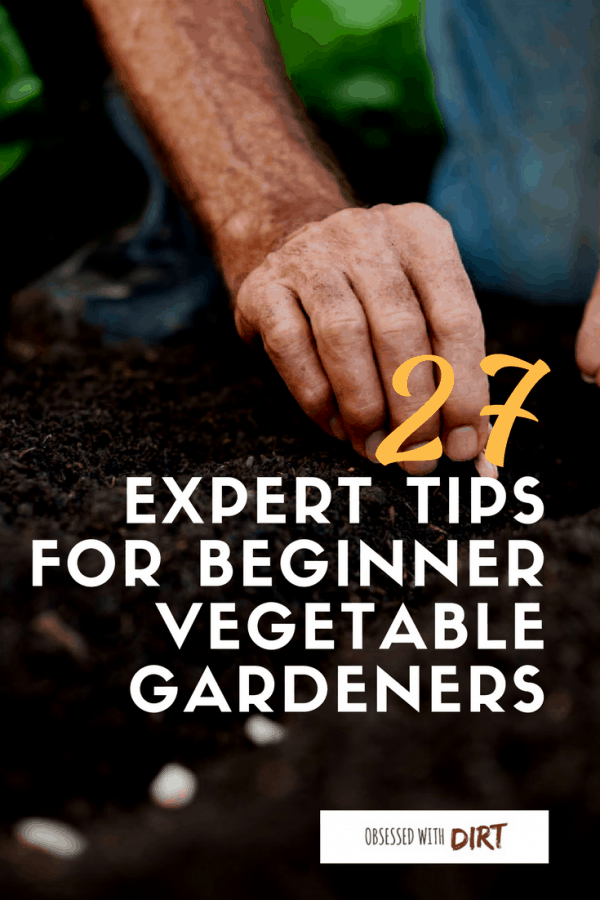
- Everything You Wanted to Know About Red Tamarillos - June 2, 2025
- A Guide to Tulips: Everything You Need to Know & More… - June 2, 2025
- Guanabana: Description, Flavor, Benefits, And Uses - May 27, 2025

15 thoughts on “27 Tips For Beginner Vegetable Gardeners”
Comments are closed.